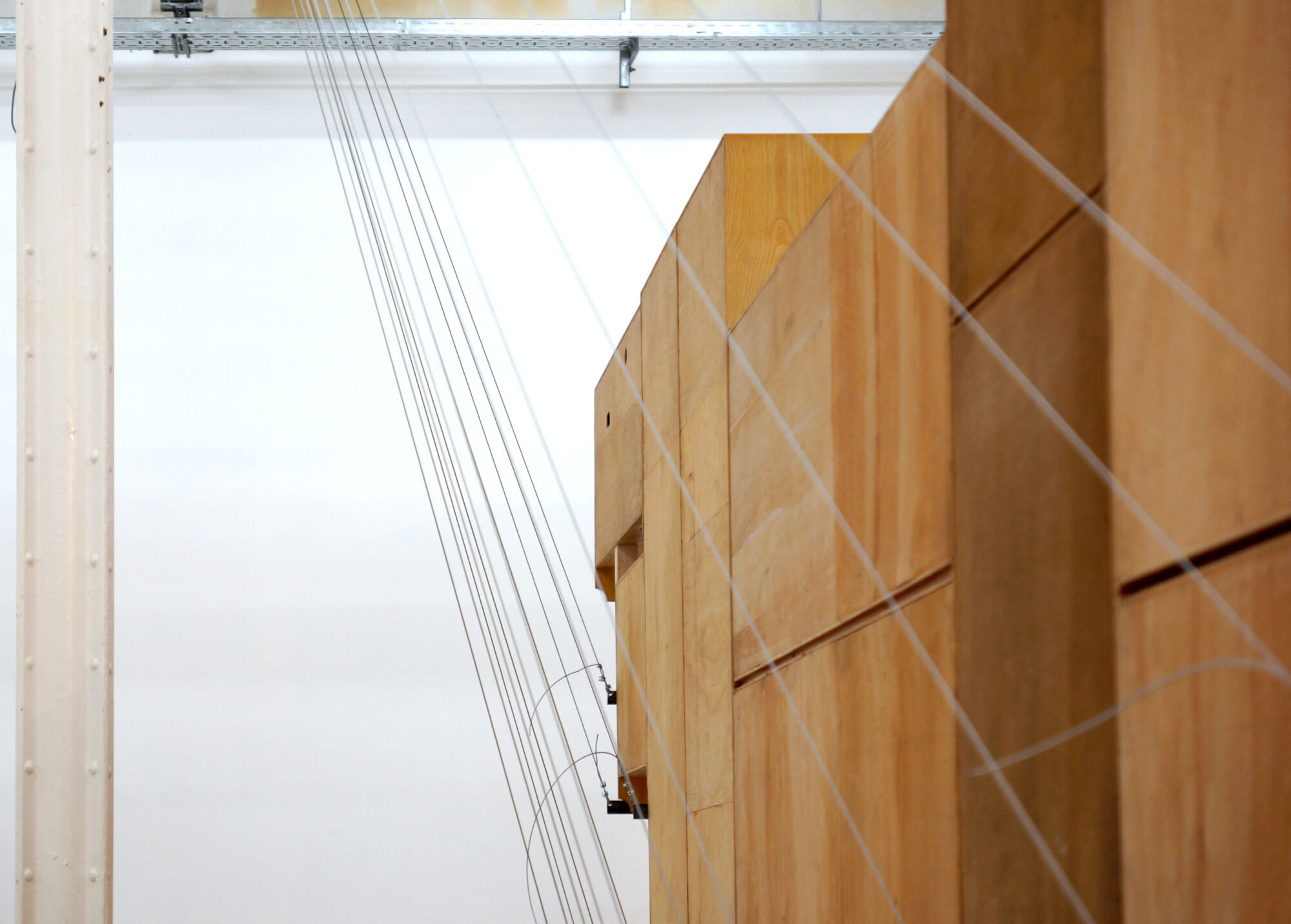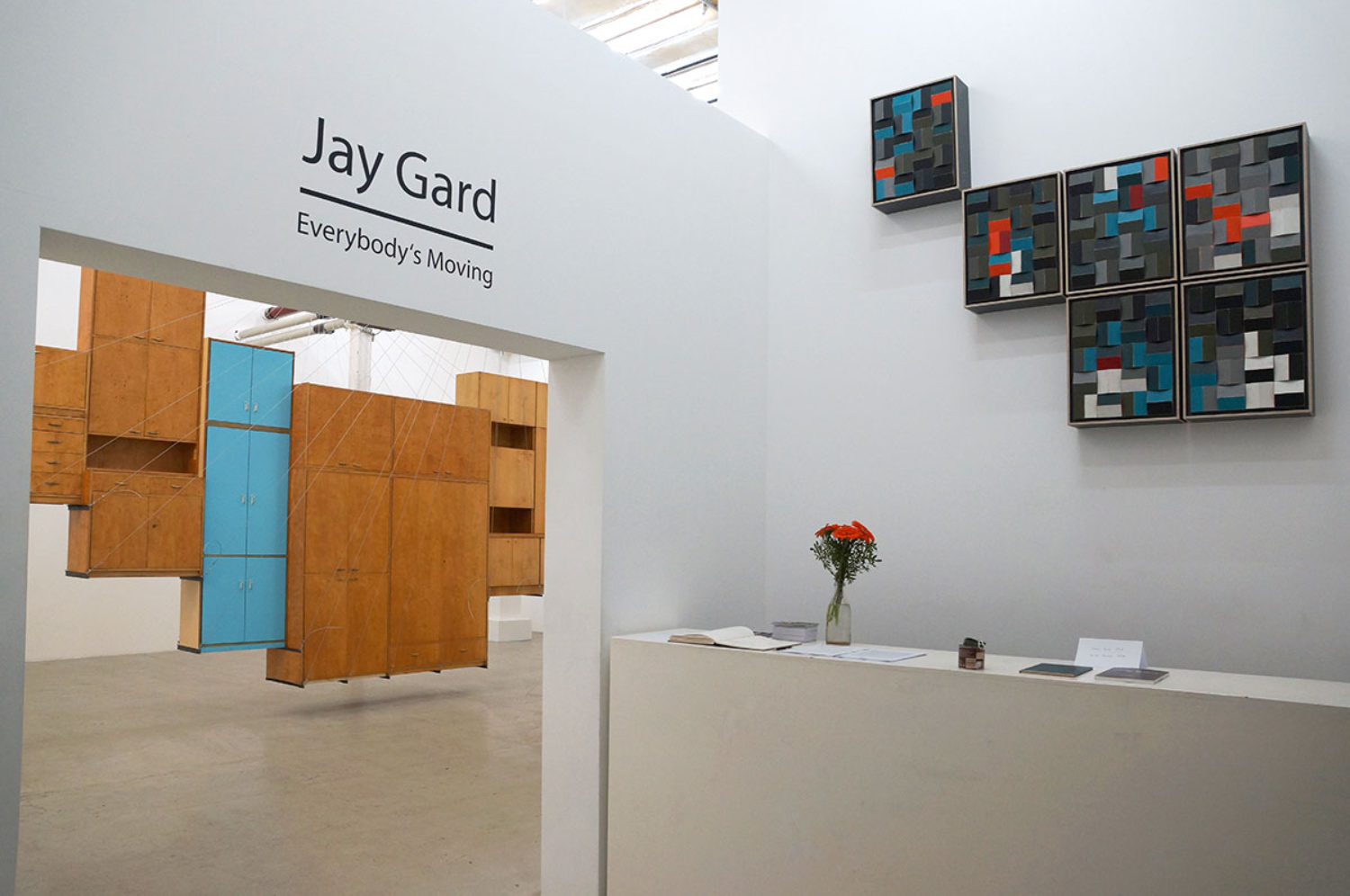
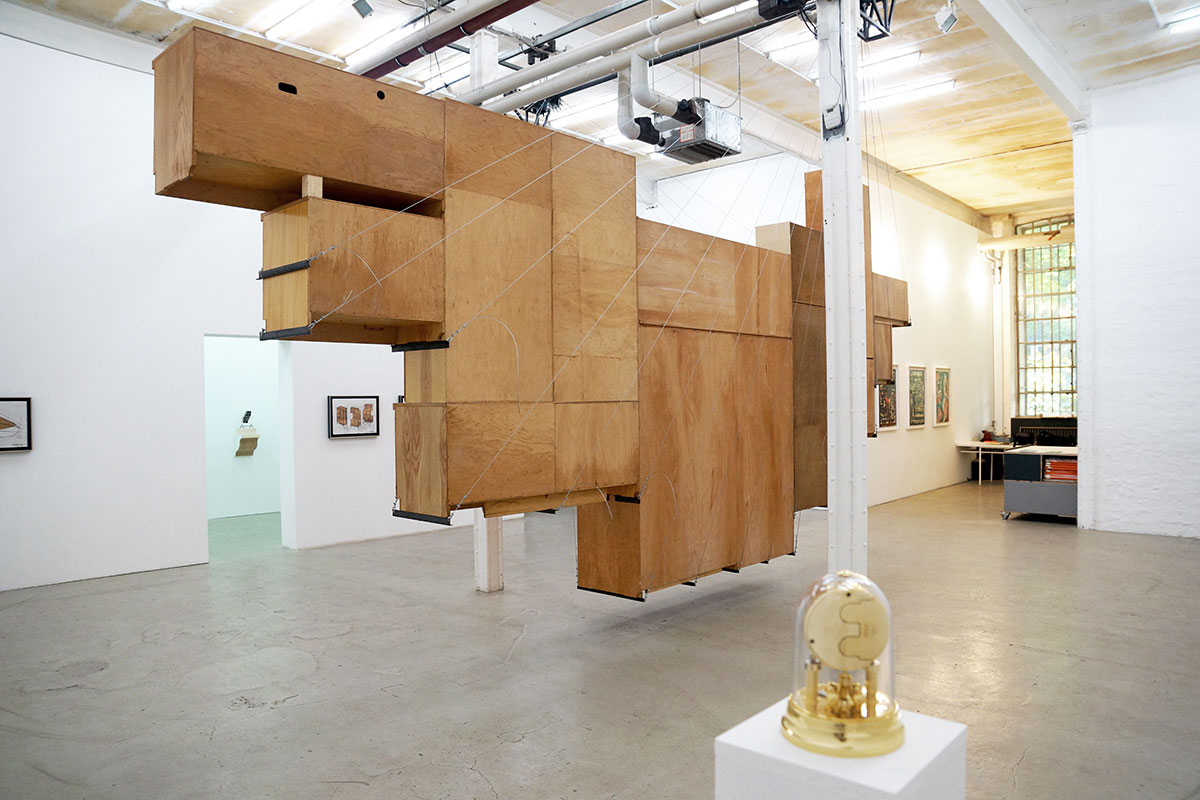
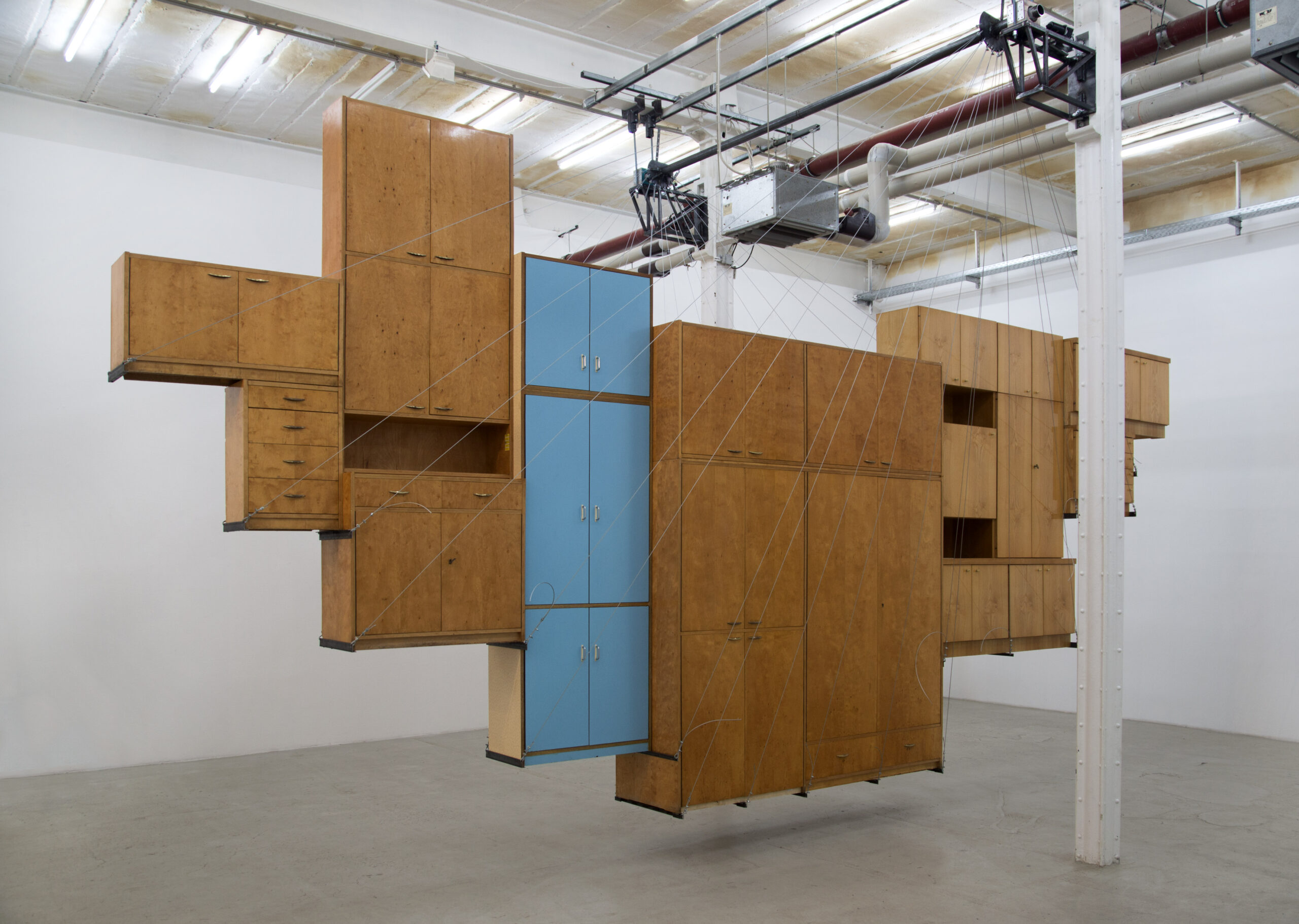


Spin dryer, plaster
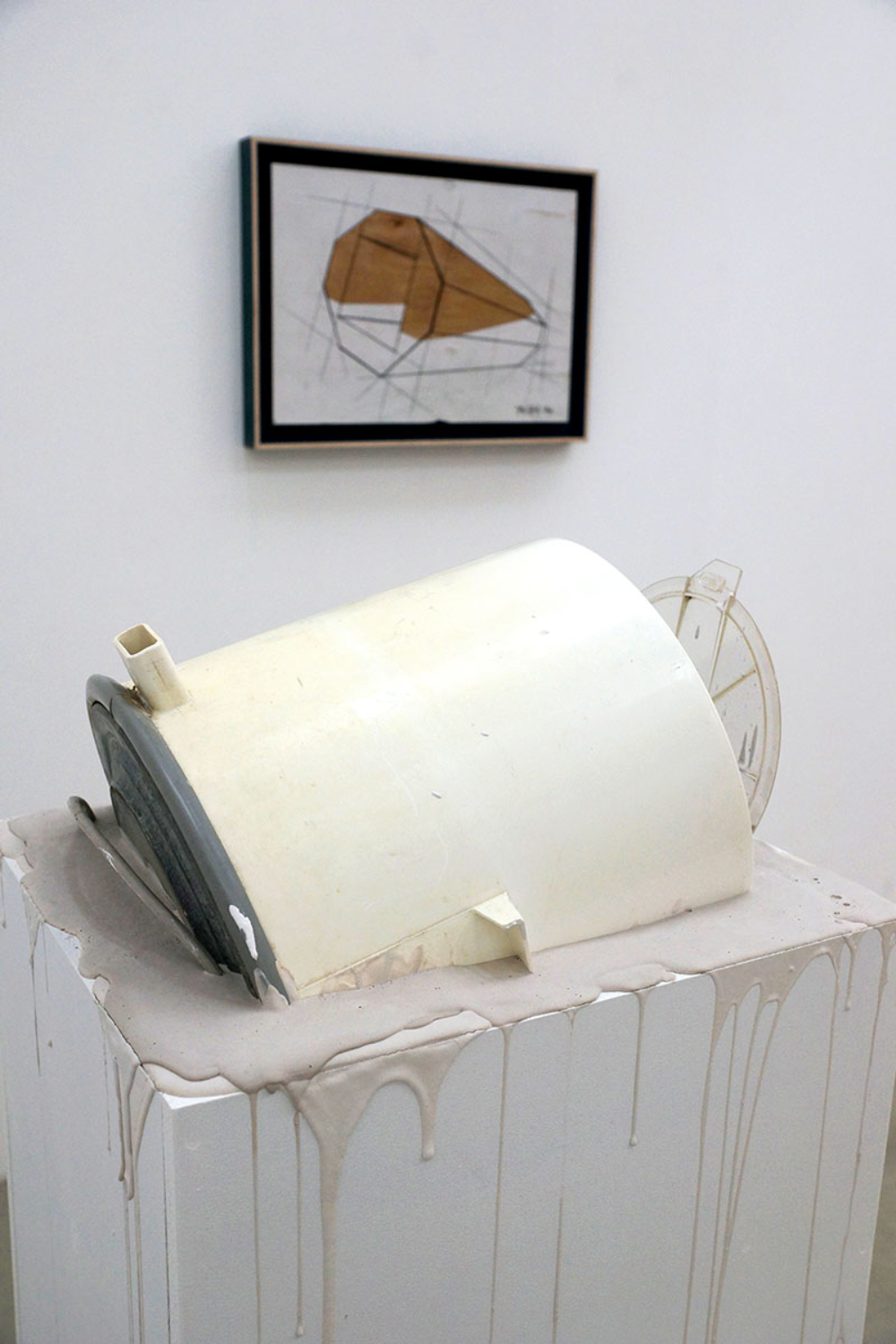
Spin dryer, plaster
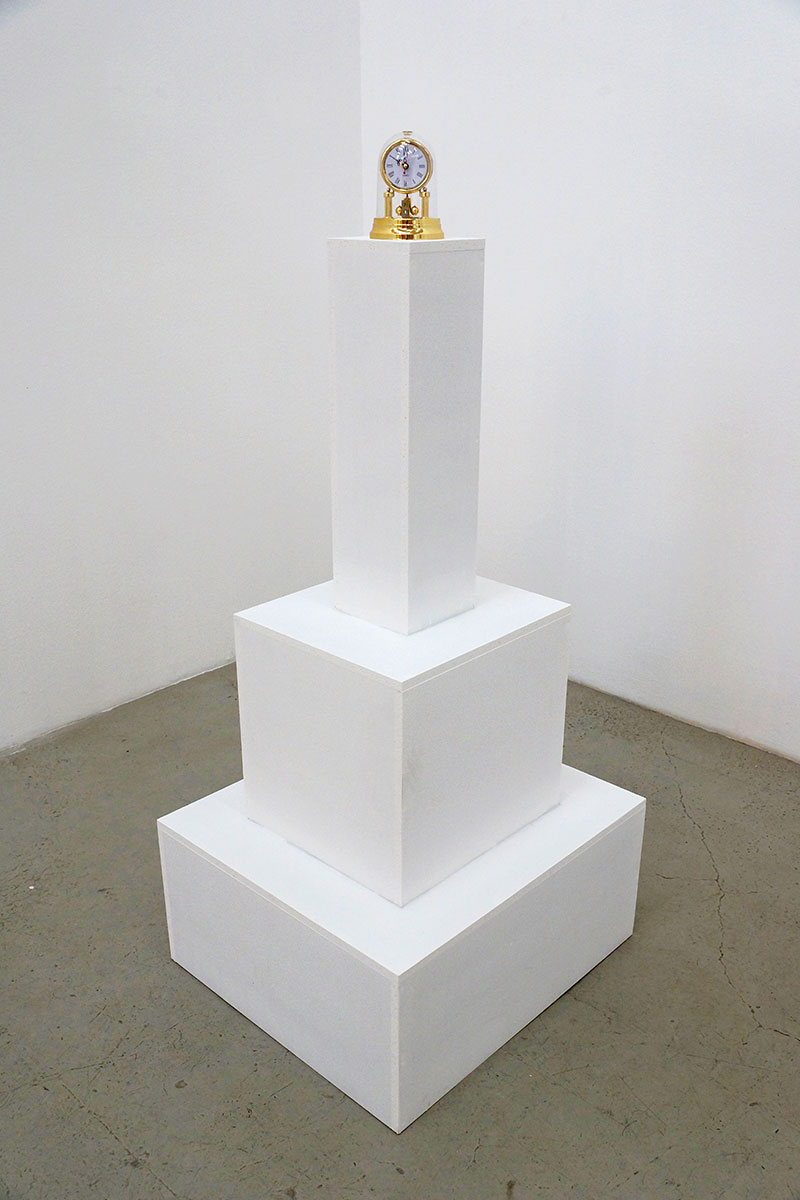
Pendulum clock, metal bracket, screws
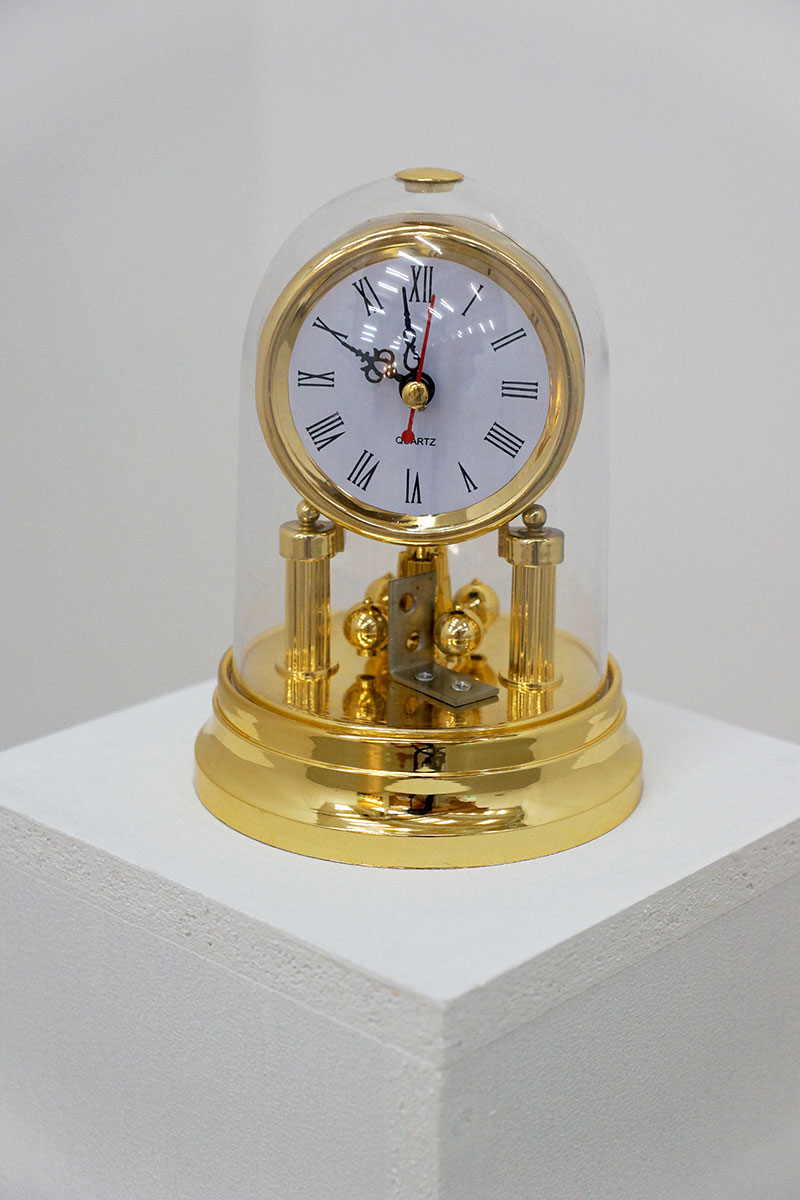
Pendulum clock, metal bracket, screws
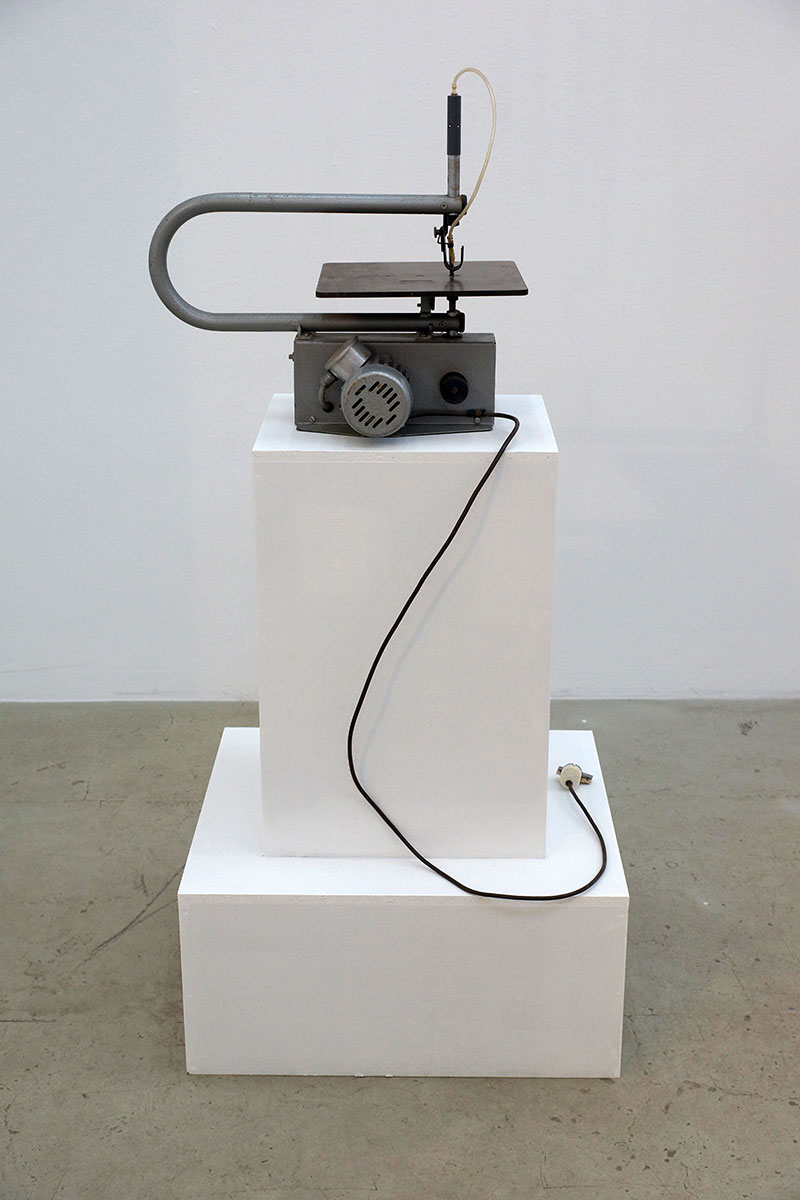
Jigsaw, metal angle, screws
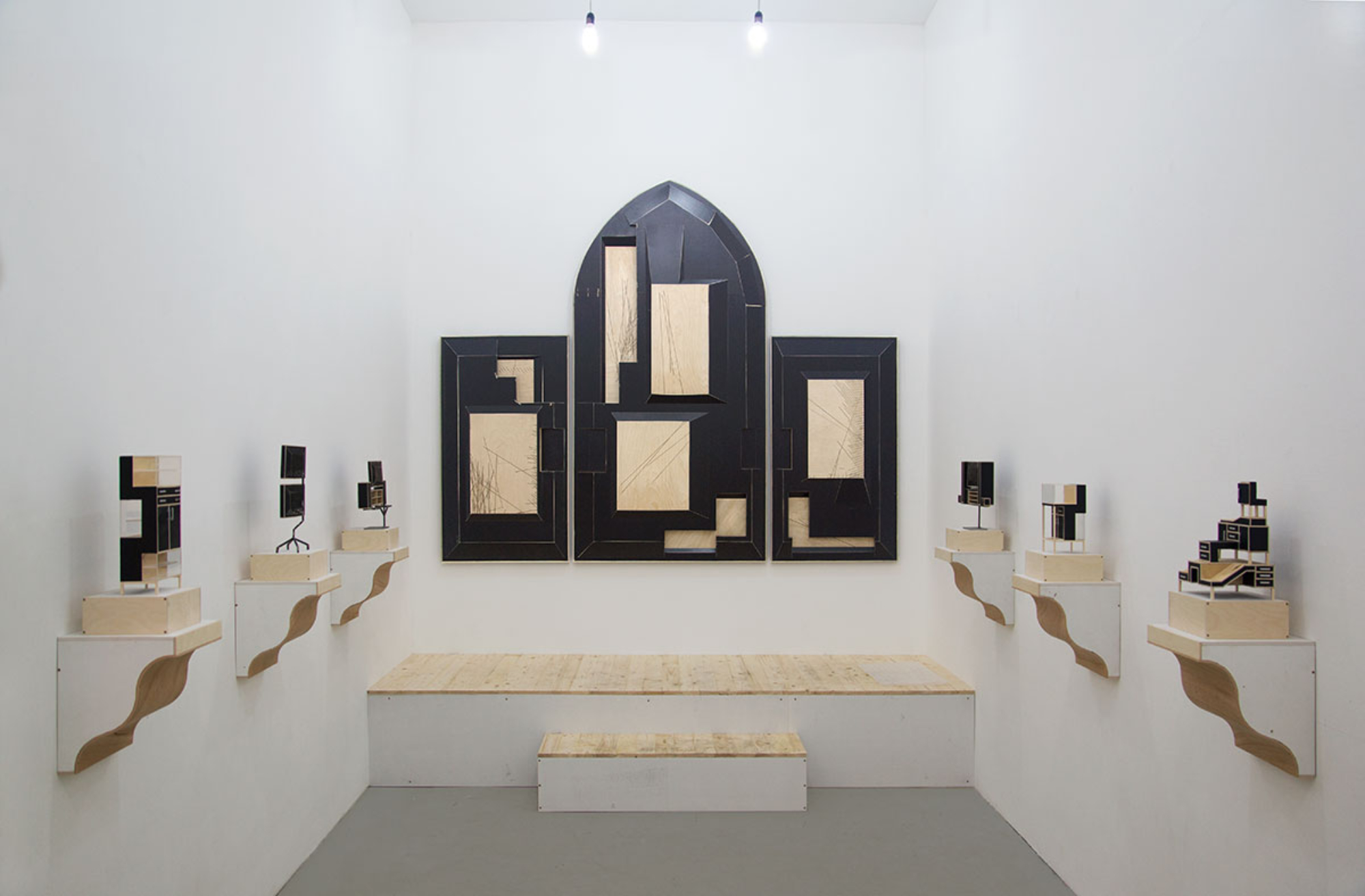
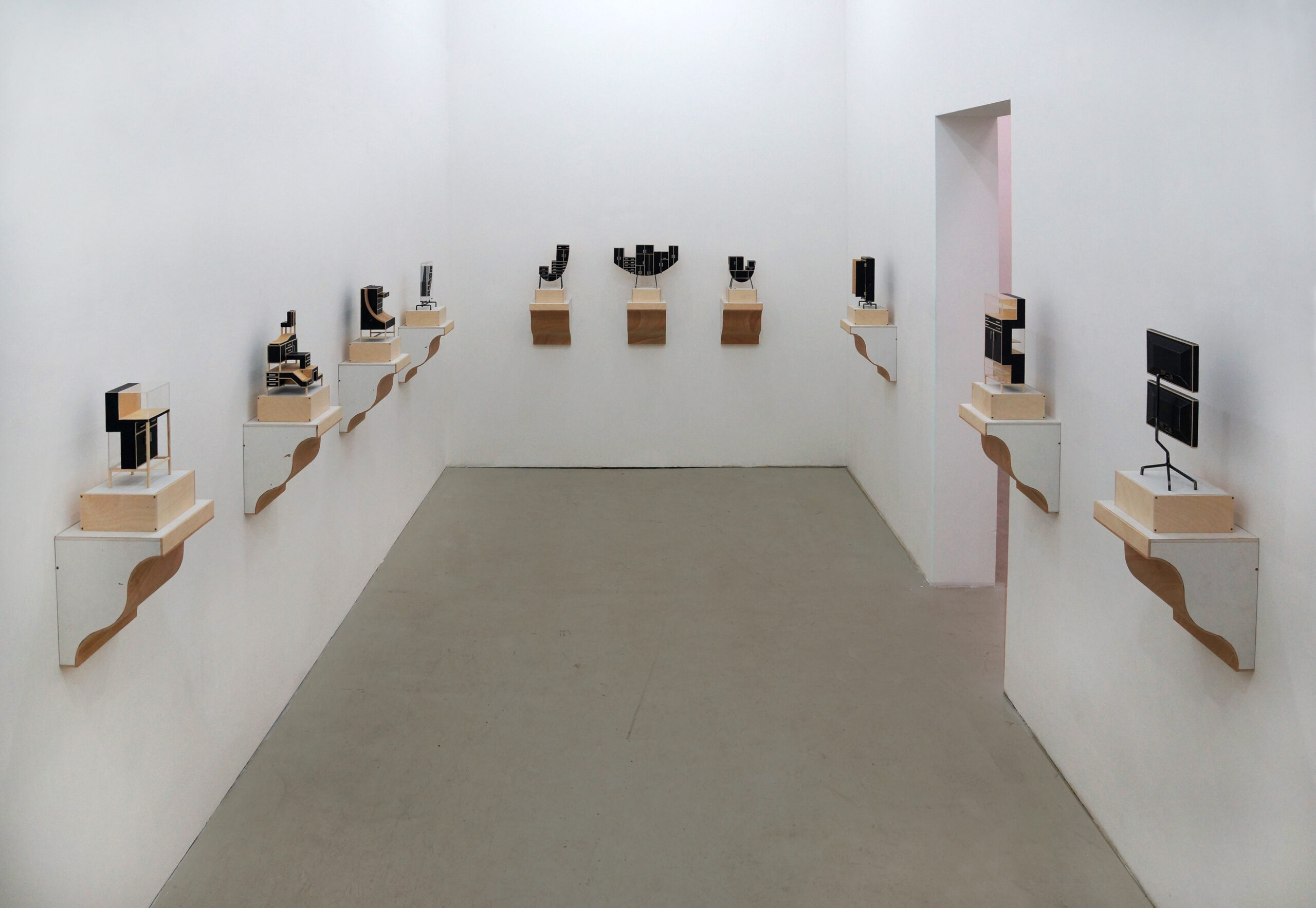
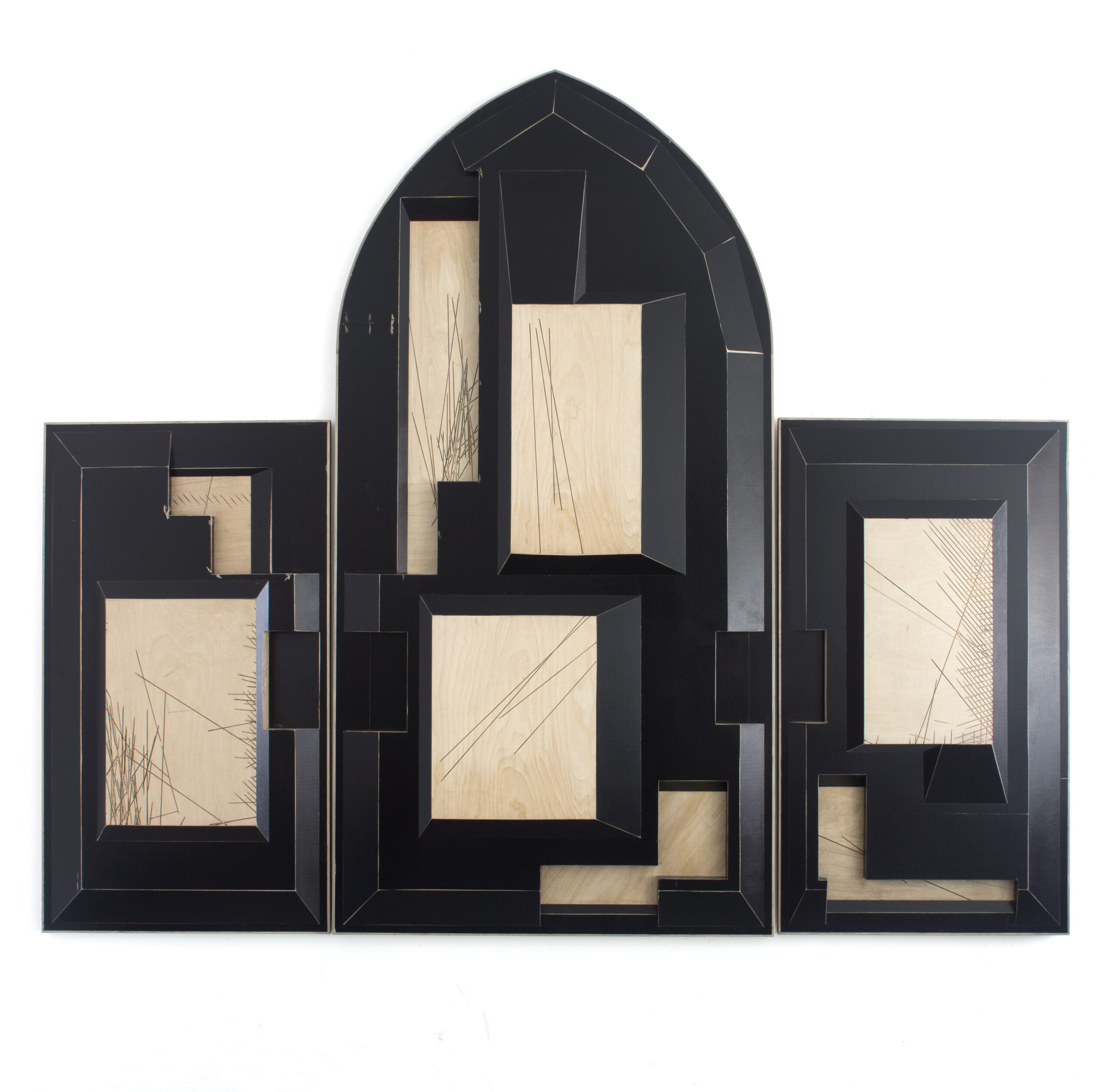
Plywood, acrylic paint, screws
255 x 215 x 8 cm
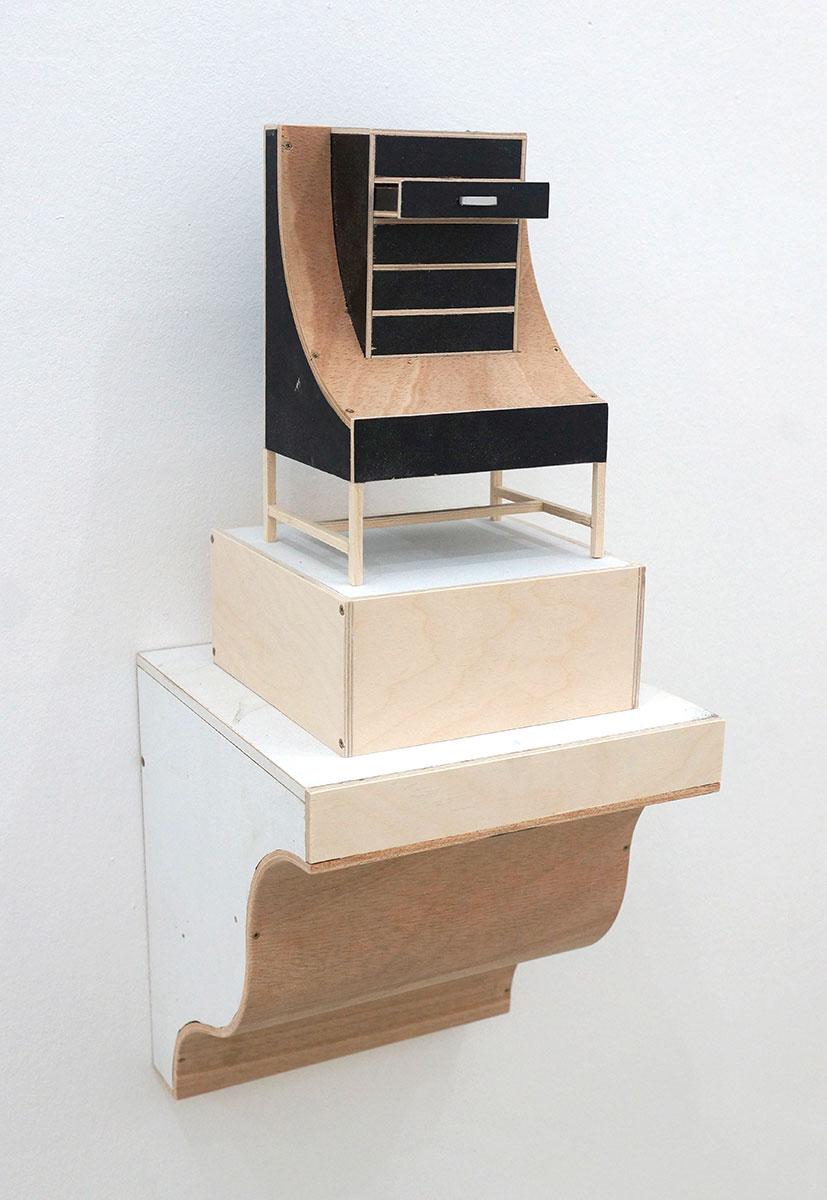
plywood, acrylic paint, metall
ca. 25 x 17 x 13 cm

Plywood, acrylic paint, metal, acrylic glass
approx. 30 x 40 x 6 cm
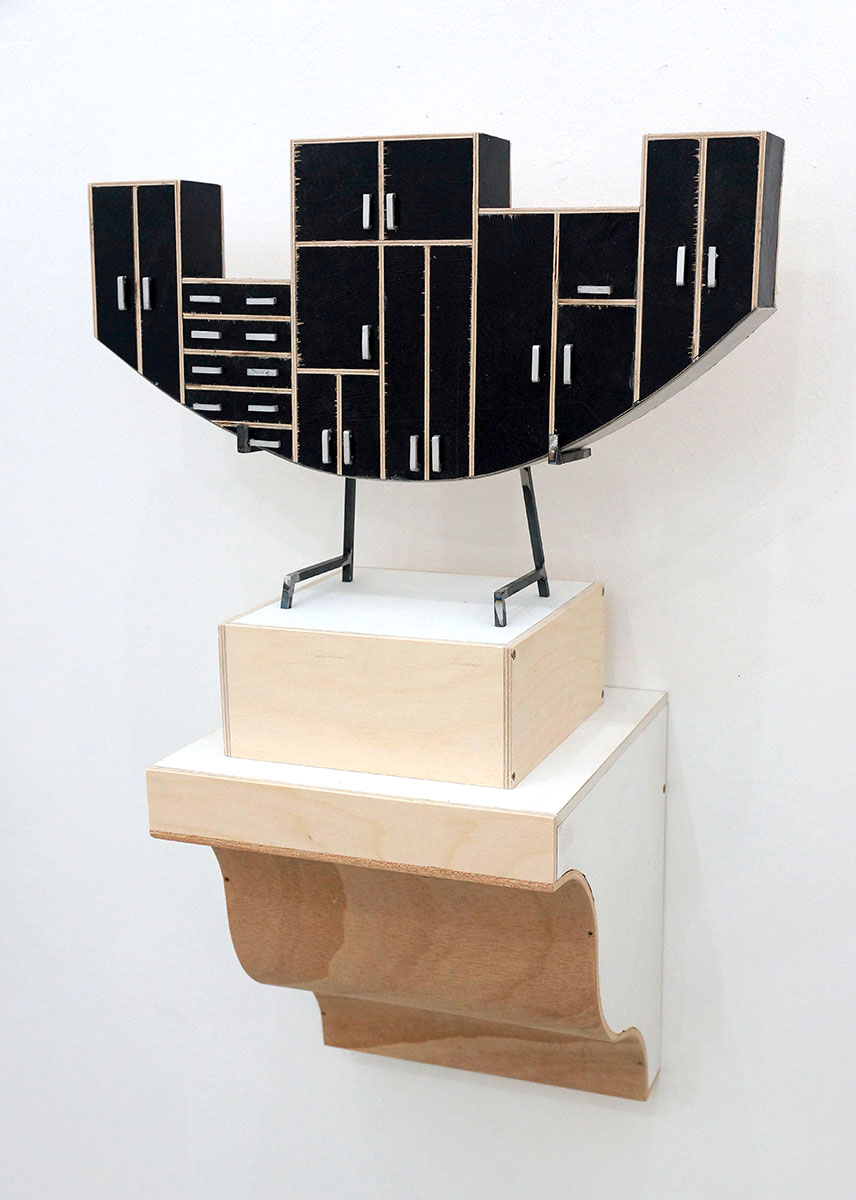
Plywood, acrylic paint, metal, acrylic glass
approx. 30 x 40 x 6 cm

Plywood, acrylic paint, metal, acrylic glass
approx. 30 x 40 x 6 cm
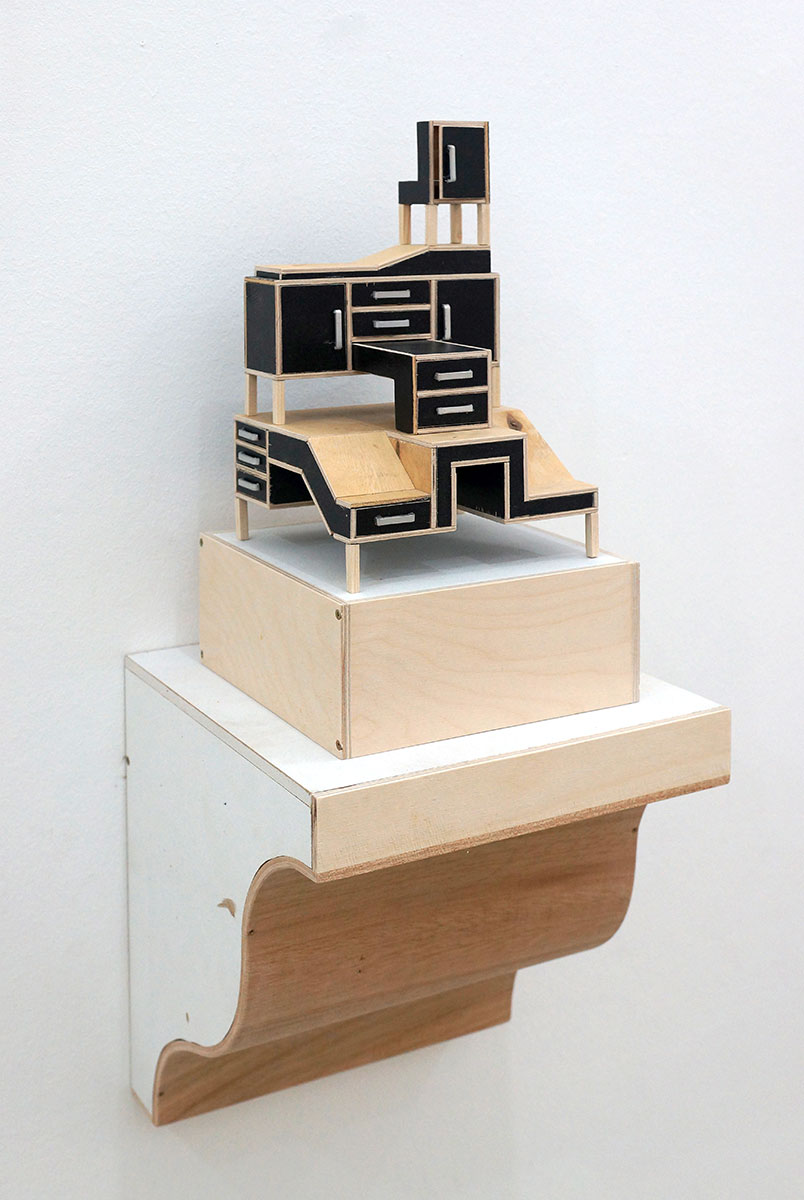
Plywood, acrylic paint, metal, acrylic glass
approx. 30 x 40 x 6 cm

acrylic paint, plywood, screws
102 x 78,5 x 6 cm
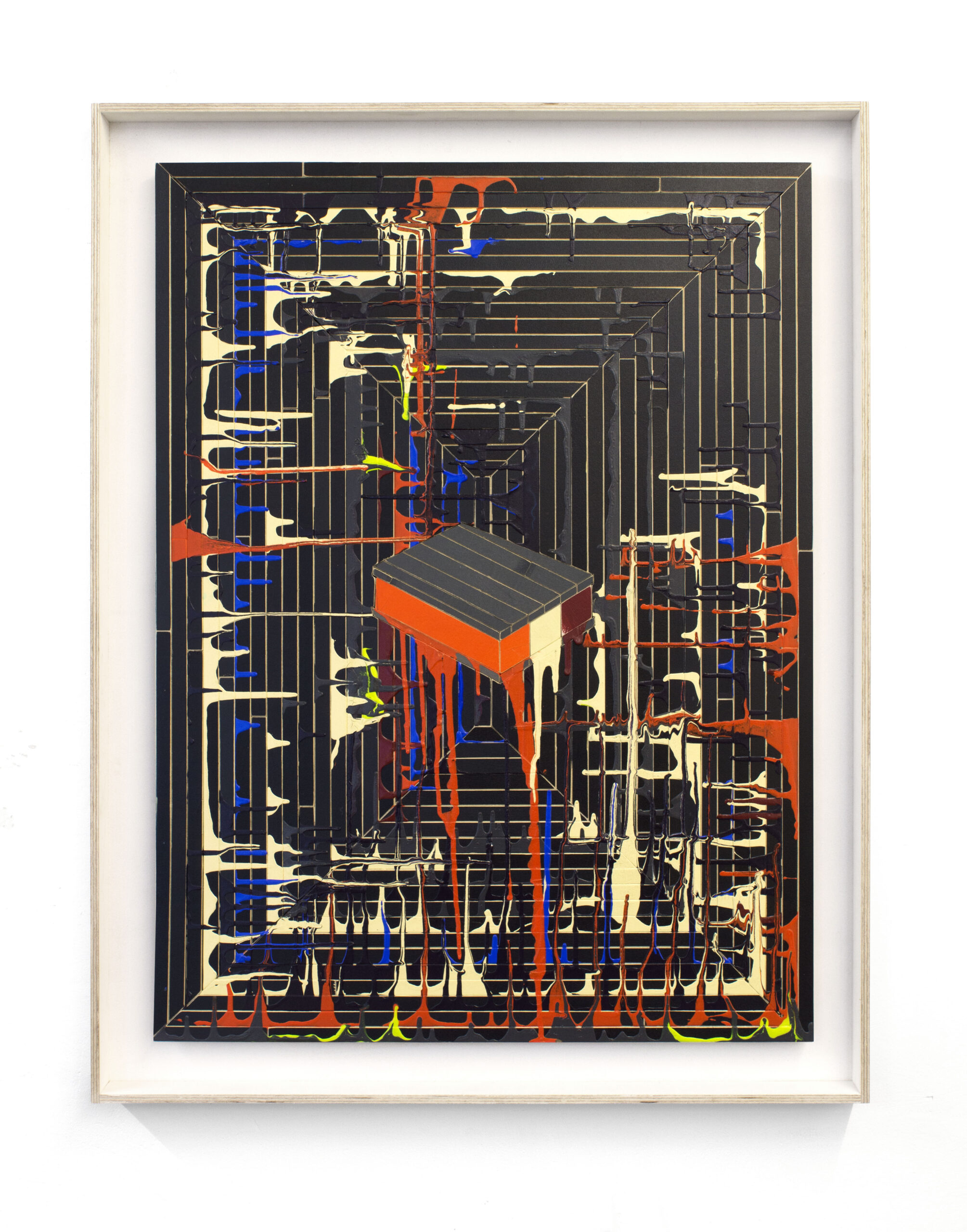
acrylic paint, plywood, screws
102 x 78,5 x 6 cm
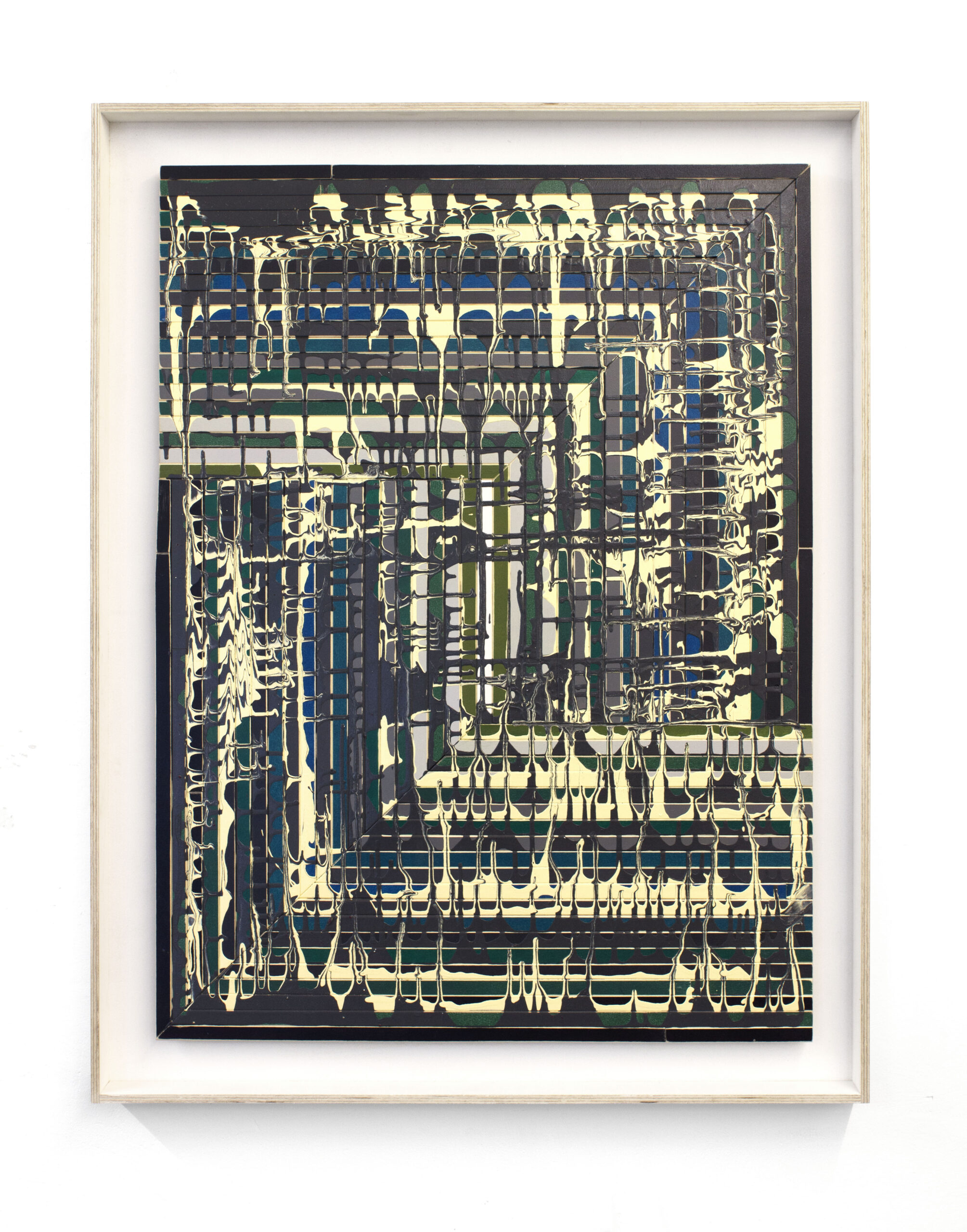
acrylic paint, plywood, screws
102 x 78,5 x 6 cm
Jay Gards solo exhibition, ambivalently titled „Everybody‘s Moving“ is, aside from many interpretatory paths the viewer might take, mostly one thing: an homage. In an extensive installation, the artist has elevated his grandparents furniture – which has accompanied them for almost 40 years in one and the same apartment – to a swinging and levitating state. The furniture, self-designed by the artists grandfather, references the DIY-Mentality and creative (re)usage of materials and resources, during the GDR period, that influenced and continue to influence the works of Jay Gard, which oscillate between art and craft. Simultaneously, the levitating presentation of furniture implies a reflection on sedentariness, the process of getting settled someplace, and the more nomadic lifestyle of younger generations. Especially the biography of young and emerging artists is oftentimes characterized by an everchanging living- and studio-situation. It is, too a levitating
state, which does not allow settling down, or make it seem worthwhile. At the same time Jay Gard presents the appliances that have permanently been made use of and were always moving in his grandparents home as readymades and relics, ironically elevated on pedestals, withdrawn from the oscillations of everyday life. The furniture and household items are characterized by a certain patina, quite obviously different stylistic conventions are valid in design today. Within the whitecube and exhibition-context the furniture seem to be slightly disconnected and refer, in their surface and visual structure, to the space they originally functioned in. This notion opens up a timeline that leads to the enactment that Jay Gard created for the small room in the gallery: a sacral space with an altar and corbel enfolds around the viewer. The timelinepoints into two directions at the same time: Firstly the visual and architectural structure of sacral
spaces, secondly to the altar-like presentation of modern, multi-media entertainment systems, wich seems to employ quite similar parameters. The side wings of the altar show the backsides of flat screens adapted in plywood: un- or nondesigned surfaces, whose appearence is solely determined by functionality, who act antithetically to the fully designed front side of the devices. To make spaces „levitate“ and oscillate, to give structure, character to them and open up different views and perspectives, is on the one hand the challenge installation artists face over and over again. At the same time it is the function of furniture in private homes. Visualizing this particular
phrasing Jay Gard simultaneously refers to the permeable grey area between arts and crafts as well as the specific function of objects within and outside of their natural context
